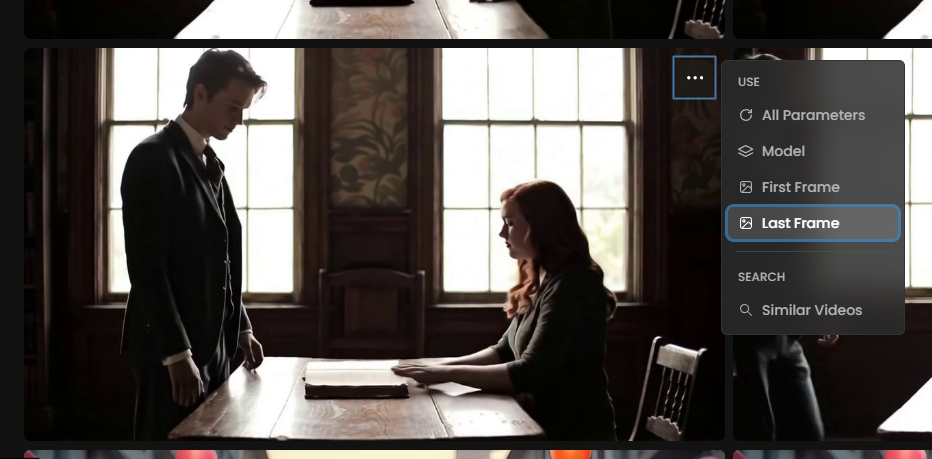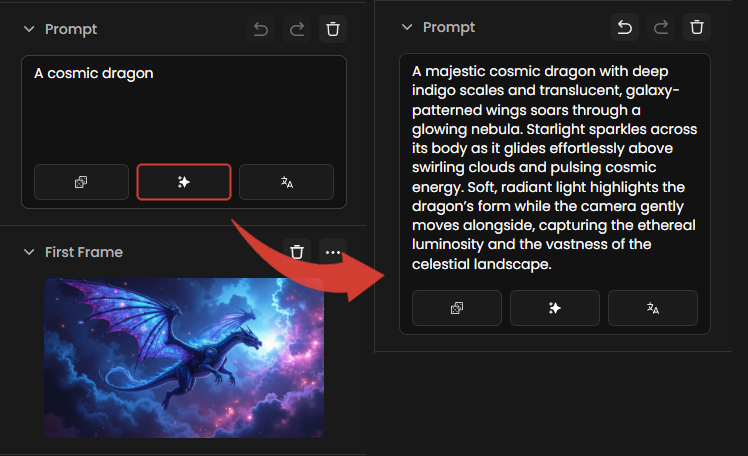1. Overview of the Veo Video Models
Google Veo is a suite of cutting-edge AI video models developed by Google DeepMind, designed to empower filmmakers and storytellers. The Veo family has evolved, with Veo 3 being the latest state-of-the-art version, building upon the foundations laid by earlier iterations like Veo 2. Each version has brought significant improvements in video quality, realism, prompt adherence, and creative control.
In the broader landscape of video models, Veo has quickly established itself as a prominent player alongside other leading video generation systems such as Kling, Runway, or Sora. What distinguishes Veo is its particular strength in generating high-quality, realistic videos with native audio integration, excelling in physics, realism, and precise adherence to user prompts. It is capable of producing videos with dialogue, voice-overs, sound effects, and music, all generated natively within the model [1].
2. Key Strengths
Superior Realism and Fidelity
Veo models, especially Veo 3, are designed for greater realism and fidelity, including the capability for 4K output (for Veo 3). Veo 3 demonstrates advanced understanding of real-world physics, leading to more believable and natural movements within the generated videos [1, 6].
Enhanced Prompt Adherence
One of Veo's significant strengths is its improved prompt adherence, meaning the models are highly responsive and accurate in translating user instructions into video content. This allows for more precise control over the generated output, ensuring that the video closely matches the textual description [1, 4].
Native Audio Generation
Veo 3 stands out by generating all audio natively, including dialogue, voice-overs, sound effects, and ambient noise. This integrated audio capability eliminates the need for separate audio generation and synchronization, streamlining the video creation process and enhancing the overall quality and immersion of the generated content [1].
Creative Control and Consistency
Veo offers new capabilities to achieve higher levels of creative control and consistency. While earlier models might produce similar results for the same prompt, Veo 3 is designed to maintain visual continuity, especially for characters, across different generations if detailed character descriptions are kept consistent [4]. This is a key feature for narrative-driven content and character animation.
In the video below, 3 different videos were created using the same description of the character in the prompt followed by the description of the scene.
Resolution and Duration
Veo models support various resolutions, with Veo 3 capable of generating videos up to 4K. The models can generate 8-second clips, with the possibility to generate longer sequences through concatenation on Scenario, by reusing a “Last Frame” as the new “first frame”. Simply click the three-dot menu on the generated video and select "Last Frame". This will copy the final frame into the first frame input field on the generation panel, ensuring smooth visual continuity between clips.

This video was edited by putting together 3 scenes generated using this method.
Cinematic and Visual Styles
Veo generates videos in a wide range of cinematic and visual styles, capturing prompt nuances to render intricate details consistently across frames. This versatility allows users to create content ranging from photorealistic footage to stylized animations [7].
3. Use Cases
Filmmaking and Storytelling
Veo enables filmmakers and storytellers to create concept videos, supplementary footage, and even full narratives with integrated audio. Its ability to handle complex scenes and maintain consistency makes it invaluable for pre-visualization and production [1].
Game Design and Animation
Game developers can leverage Veo for conceptualizing character movements, environmental effects, and cinematic sequences. The model's strength in character consistency and realistic physics makes it particularly valuable for creating dynamic and immersive game assets.
Advertising and Marketing
Marketing professionals can use Veo to rapidly generate high-quality promotional content, advertisements, and storyboards. Its ability to quickly visualize and refine ideas allows for efficient iteration and prototyping of marketing campaigns.
Social Media Content Creation
Content creators can utilize Veo to produce engaging short-form videos for platforms like TikTok and Instagram. The model's capacity for generating attention-grabbing content in various styles, coupled with native audio, makes it well-suited for social media applications.
Educational Content
Educators and e-learning developers can employ Veo to create instructional videos, visual explanations of complex concepts, and interactive learning materials, taking advantage of the model's ability to visualize abstract ideas and integrate spoken explanations.
4. Examples and Output Analysis
Prompting for Visual Elements
To achieve the best results with Veo, a well-crafted prompt is essential. Prompts should include detailed descriptions of visual elements such as the subject, context, action, style, camera motion, composition, and ambiance. The more specific the prompt, the better Veo can understand and generate the desired video [4].
For example, instead of a simple prompt like "A man answers a rotary phone," a detailed prompt would be:
A solitary man stands in the warm golden glow of a late afternoon, his figure half-silhouetted beside a battered wooden table atop which sits a classic black rotary phone. He pauses, brow furrowed in anticipation, as the metallic ring fills the quiet, dust-moted air. With a steady, slightly hesitant hand, he lifts the heavy receiver, the coiled cord stretched and bobbing with the motion. As he brings the phone to his ear, his expression flickers between surprise and resolve, catching subtle reflections from the muted sunlight streaming through venetian blinds. In the background, faded wallpaper and the gentle sway of a curtain in a mild breeze set the atmosphere, while particles drift lazily through the light. The camera pushes in slowly from a medium shot to a tight close-up, capturing the tactile click of the rotary dial as it spins back, and the faint scratch of a mysterious voice humming faintly through the earpiece. The persistent ticking of a nearby wall clock and the low hum of urban life barely bleed in beneath the scene, heightening tension. The mood is suspenseful and steeped in retro nostalgia, evoking a sense of quiet anticipation and secrets about to be revealed.
You can write this prompt manually or you can use the Rewrite your prompt tool. The video below was generated using this prompt with the Veo 3 model:
We highly recommend Scenario users to take advantage of the “Prompt Spark” tool located just below the prompt box. It provides three main options: generate a prompt, rewrite your prompt, and translate the prompt.
You only need to provide a clear and straightforward description of your scene. Then, by clicking "Rewrite your prompt", the tool will enrich your input with technical terms, improve the visual detail, and, when applicable, add audio prompt suggestions to match the scene. Prompt Spark also takes the First Frame into account.

With these built-in tools, you don't need to be a prompt expert to achieve great results. Prompt Spark is designed to transform simple ideas into optimized and highly effective prompts, helping you get the most out of any video generation model, especially Veo 3.
Character Consistency
Veo 3 shows significant advancements in maintaining character consistency across different generations. By keeping a character's detailed prompt description consistent, users can generate multiple scenes with the same-looking person, which is crucial for narrative continuity. This feature is particularly strong, allowing for the creation of character reference sheets with exact wording to ensure visual continuity [4].
Prompting for Audio
Since Veo 3 generates audio natively, prompts should also include audio elements such as dialogue, ambient noise, sound effects, and music. Dialogue can be prompted explicitly (e.g., "A guy says: My name is Ben") or implicitly (e.g., "A guy tells us his name"). For explicit dialogue, it's recommended to keep it short, ideally something that can be said in about 8 seconds, to avoid unnatural pacing [4].
Dynamic Camera Movements and Environmental Effects
Veo models are capable of handling complex camera movements like pans, zooms, and tracking shots, as well as intricate environmental interactions such as weather, particle effects, and lighting changes, all with impressive realism [7].
Transport elements through the latent space
You can follow use a subject that will be carried through different spaces and it will maintain its characteristics witin different contexts. [8]
Visual notes on start frame
You can doodle and draw your notes on the first frame, like you would for a human artist, and Veo3 will follow your instructions. [9]
You can also attach notes and ask the model to delete them on first frame as a prompt. Veo3 will read them and understand them, and action on your video will follow those written prompts.
References
5. Conclusion
The Google Veo family of models represents a significant leap forward in AI video generation technology. With Veo 3 as its flagship, the models have consistently improved in realism, prompt adherence, native audio generation, and creative control.
Veo's balanced approach to video generation, offering strong performance across multiple dimensions, positions it as a comprehensive solution for various creative professionals. While other models may excel in specific niches, Veo provides a robust and versatile platform for generating high-quality, immersive video content.
References
[1] Google DeepMind. (n.d.). Veo. Retrieved from https://deepmind.google/models/veo/
[2] Google Cloud. (n.d.). Veo | AI Video Generator | Generative AI on Vertex AI. Retrieved from https://cloud.google.com/vertex-ai/generative-ai/docs/video/generate-videos
[3] Google Gemini. (n.d.). Gemini AI video generator powered by Veo 3. Retrieved from https://gemini.google/overview/video-generation/?hl=en
[4] Replicate Blog. (2025, June 10). How to prompt Veo 3 for the best results. Retrieved from https://replicate.com/blog/using-and-prompting-veo-3
[5] Google Developers Blog. (2025, April 15). Bring your ideas to life: Veo 2 video generation available. Retrieved from https://developers.googleblog.com/en/veo-2-video-generation-now-generally-available/
[6] AI-Pro.org. (2025, June 5). Google's Veo 3: AI Video Generation Model Overview. Retrieved from https://ai-pro.org/learn-ai/articles/googles-veo-3-ai-video-generation-model/
[7] Google AI for Developers. (n.d.). Generate video using Veo | Gemini API.
[8] Martin Nebelong (2025, July 15) . Retrieved from https://x.com/MartinNebelong/status/1945128949438197784
[9] Google Labs (2025, July 24). Retrieved from: https://x.com/googlelabs/status/1948477692715700718?s=46
Was this helpful?